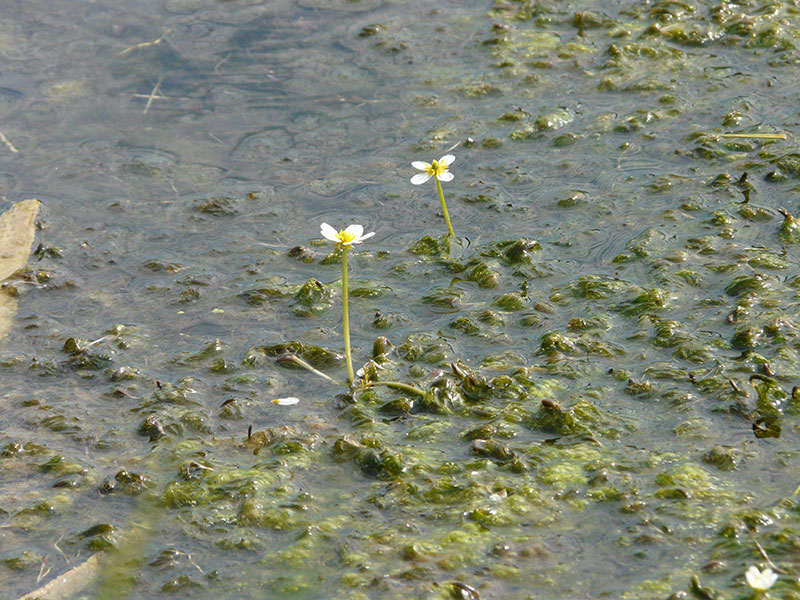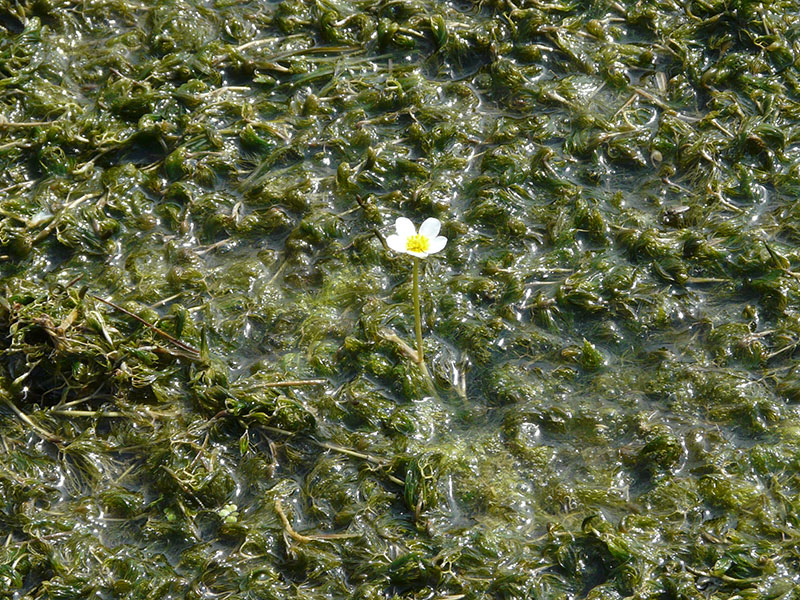Ranunculus aquatilis / common water crowfoot
- found in slowly flowing water ways, ditches, ponds
- white, waxy flowers with yellow centers; 4 or 5 petals
- flowers raised a couple inches above the water surface
- usually grows in dense mats that look a lot like slime
Synonym: Batrachium aquatile, Ranunculus trichophyllus, Ranunculus longirostris
Also known as: white water crowfoot, water buttercup
White water crowfoot appears as an attractive, waxy white flower with a yellow center raised above what generally appears to be horrible slime. In fact, it is growing in dense mats on the surface of water. To accomplish this, it has two sorts of leaves. Under water, it has branching thread-like leaves. On the surface, in slowly moving water, ponds or ditches, it also has toothed “floater” leaves, i.e. leaves more or less designed to keep the flowers above water. These develop at the same time that the flowers do. In fast flowing water, the floaters may not be there (in case you want to get down into a ditch to look).
The flowers produce very small achenes which float for a few days after maturation before sinking. Germination, in the wild, seems to be underwater. Populations can also spread by division when mechanically disrupted. Basically, this is the same as making cuttings.
| Color | |
|---|---|
| Family | |
| Blossom size | |
| Inflorescence size | |
| Inflorescence type | |
| When? | |
| Where? |




